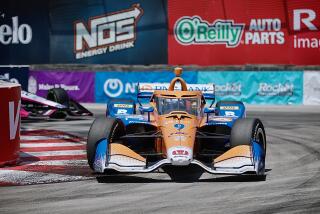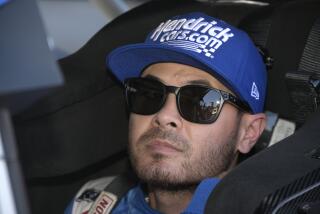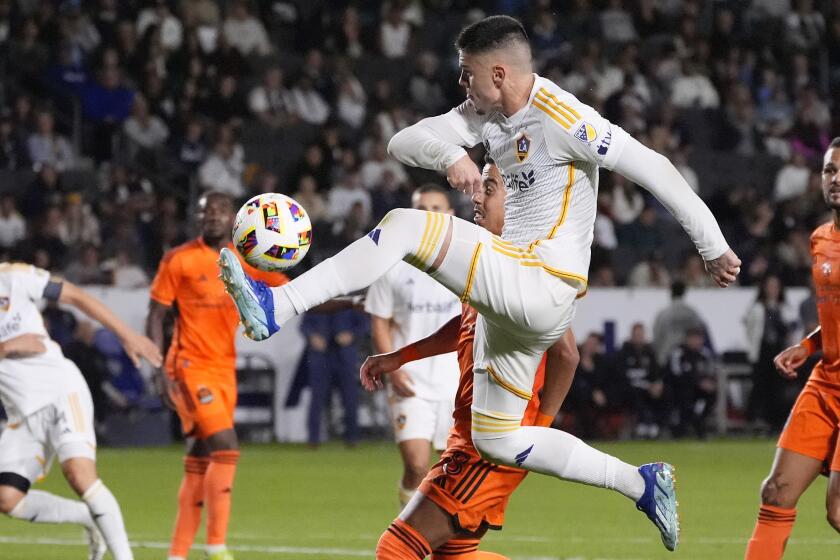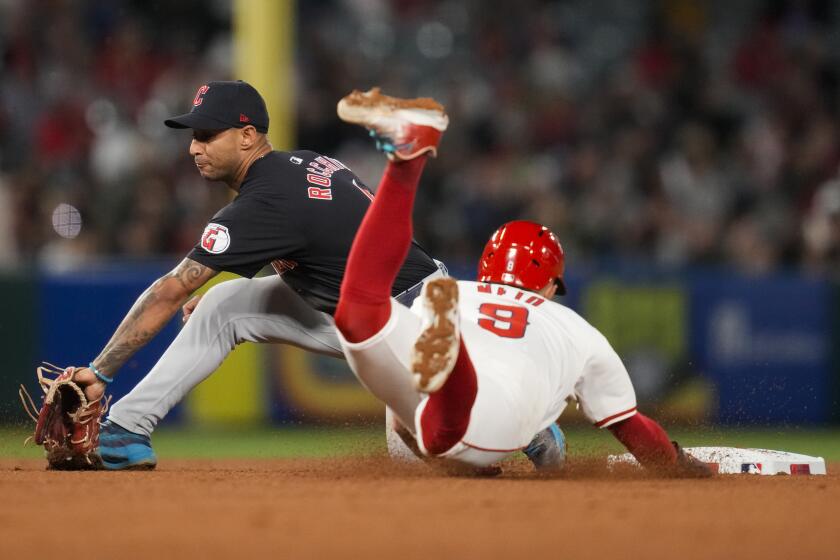Look to the back of the pack at Indy 500
Reporting from Indianapolis — One thing appears all but certain at this year’s Indianapolis 500: There’s going to be lots of passing at more than 200 mph and it’s going to happen quickly after the green flag drops.
As the Indianapolis Motor Speedway celebrates its 100th anniversary in Sunday’s race, some of the best cars and drivers are starting deep in the 33-car grid.
That’s because they had poor runs during qualifying last weekend. But once the race is underway on the rectangular, 2.5-mile speedway, those top drivers will be charging through the field.
Consider:
Defending and two-time Indy 500 winner Dario Franchitti of the powerful Target Chip Ganassi Racing team is starting ninth.
Helio Castroneves, a three-time Indy 500 winner who’s with another formidable team, Team Penske, is starting 16th.
Danica Patrick, who might be driving in her last Indy 500 if she moves to NASCAR next year, is starting 26th for the Andretti Autosport team.
Right behind her is Ryan Briscoe, another Team Penske driver, in 27th and Patrick’s teammate, Marco Andretti, starts 28th.
And starting in front of Castroneves, Patrick, Briscoe and Andretti are several drivers with much less experience in the Indy 500, including two drivers making their Indy 500 debuts: J.R. Hildebrand (starting 12th) and James Hinchcliffe (13th).
Canadian Alex Tagliani won the pole position with an average speed of 227.472 mph and Scott Dixon, the 2008 Indy 500 winner and Franchitti’s teammate, starts second.
Briscoe left no doubt he expects to be among those passing lots of cars, in no small part because he drives for legendary team owner Roger Penske, whose drivers have won 15 Indy 500s, far more than any owner.
“I’m starting in the back, but we’ll be able to get to the front,” Briscoe said. “I’ve got a Roger Penske calling my race.”
A new rule in the Izod IndyCar Series this season also is expected to foster lots of passing.
The series started using “double-file restarts,” in which the leaders line up two-by-two after a caution period. One unique feature of the Indy 500 is that the cars start the race three wide and then try to funnel through the first turn, always a nail-biting moment.
But after the start, restarts would be single file.
Now, they’ll restart side-by-side and the sport is holding its collective breath because, in the first four IndyCar races of the season, the new format contributed to multiple collisions.
The stakes could be even higher if there is a restart in the closing stages of the 200-lap Indy 500.
“I think everyone’s sort of dreading that last restart at Indy,” said Australian Will Power, another Penske driver who leads the IndyCar championship standings by 14 points over Franchitti.
The drivers will have their final one-hour practice Friday, still known at Indy as “Carb Day,” a throwback term from the bygone era when engines still had carburetors and mechanics would make pre-race adjustments.
Although the first Indy 500 was run in 1911, this is not the 100th running of the race because the event was not held in 1917-18 and 1942-45 because of the world wars.
The race is scheduled to start at 9 a.m. PDT Sunday.
More to Read
Get our high school sports newsletter
Prep Rally is devoted to the SoCal high school sports experience, bringing you scores, stories and a behind-the-scenes look at what makes prep sports so popular.
You may occasionally receive promotional content from the Los Angeles Times.






